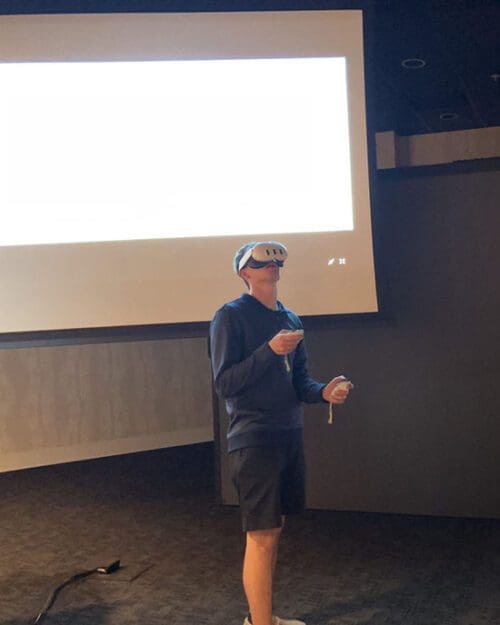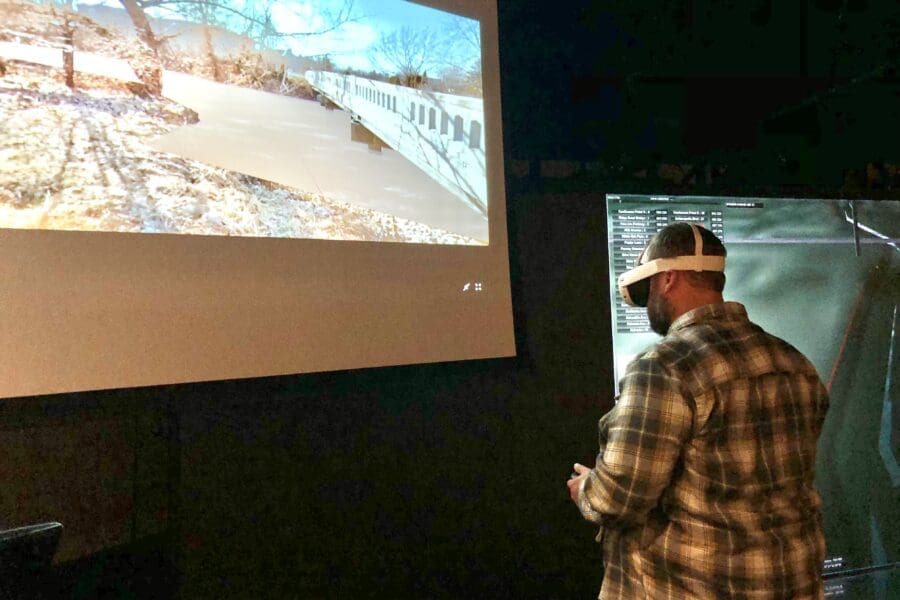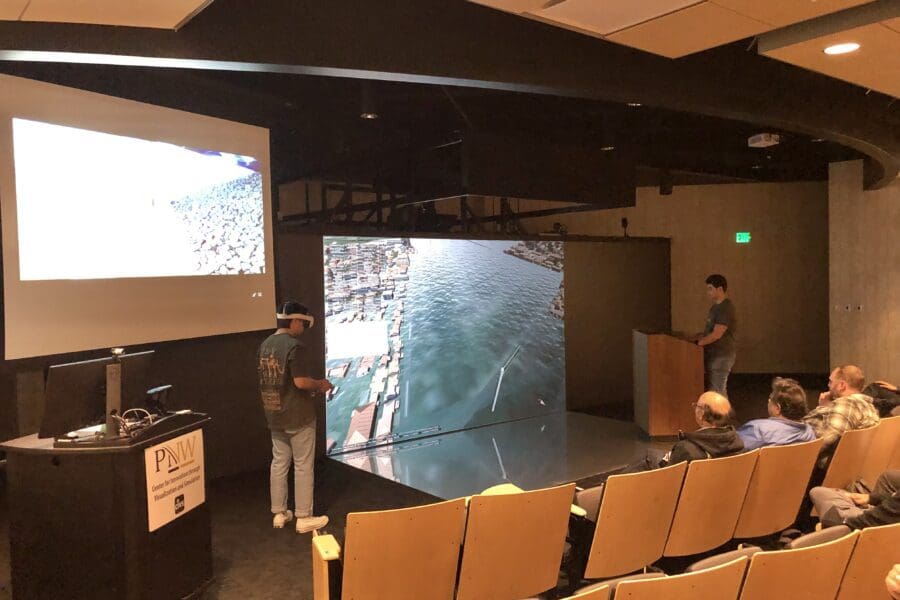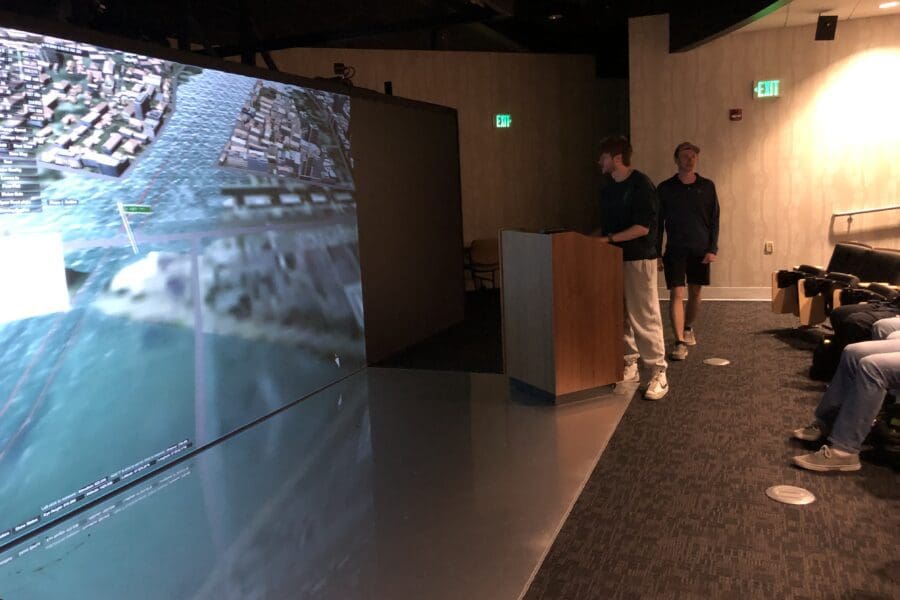CIVS Virtual Flood Simulator Taught in CE Hydrology Lab

On April 23, PNW Civil Engineering students had a virtual lab in the CIVS Immersive Theater as part of the CE 34200—Engineering Hydrology and Hydraulics course. Students used the CIVS Virtual Flood Simulator to learn about flood mitigation strategies.
During the virtual lab, students measured data at different times during the flood and were able to see the impact of levees and sluice gate operation. The U.S. Corps of Army Engineers installed a series of levees at various points around Little Calumet River in response to the event to help deal with future flooding.
The simulator was created under an NSF grant led by Professor Chandra Chandramouli in collaboration with CIVS Senior Research Scientist John “Jack” Moreland. It visualizes data collected from the 100-year flood event that occurred around the Little Calumet River in Northwest Indiana in 2008, as well as simulated data to show how the flood would’ve been different using various remediation strategies.
It is implemented in CE 34200—Engineering Hydrology and Hydraulics every year, which provides a tremendous hands-on experiential learning opportunity. Dr. Majety, Assistant Professor and Director of the Design Studio at the College of Engineering, teaches Engineering Hydrology and Hydraulics this semester.

The class was also joined by returning PNW alumni James Boehm, who now works as a Senior Hydraulics Engineer for the Indiana Department of Transportation. He graduated from PNW with a Bachelor of Science (BS) in Civil Engineering in 2016 and worked as a Lab Assistant for Hydraulics and Hydrology.
The PNW Civil Engineering curriculum provides a broad education in the fundamentals of Civil Engineering. Students may pursue a general program or choose a specialization in areas such as structural engineering, transportation, water resources, and environmental engineering.



